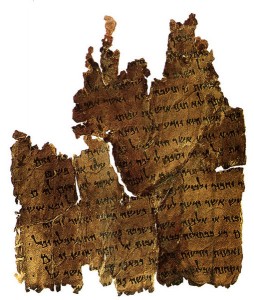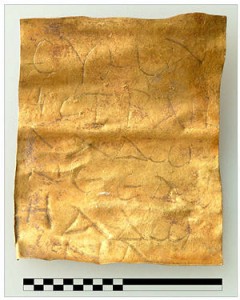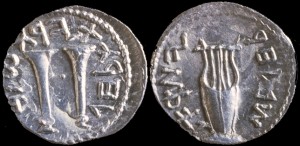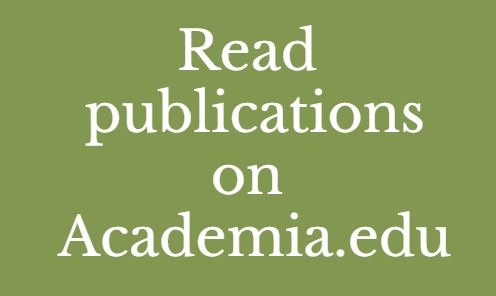The Lord is one: Reflections on the History of Judaism in Light of the Shema Text from Halbturn, Austria
The discovery in Halbturn, Austria in 2000 of a golden plate with the words of Deut. 6:4 in the third-century CE grave of a young child of 18 months, has raised a series of philological and historical questions. These issues, because of the significance of this particular verse in Jewish tradition, open up virtually all the questions that constitute the subject of this symposium. These issues are not original to me but, rather, are raised in a series of articles in Journal of Ancient Judaism 1, 1-2 (2010). Perhaps I was bitten with gold-Shema fever, since I actually had the privilege of holding this item in my hand. Let me admit my Tendenz in advance: for a committed Jew to hold this item in his hands concretizes millennia of Jewish faith, but also of tragedy and martyrdom. I hope that this reality will not impinge upon the academic character of my presentation. As you will see, my intention here is not to directly contribute to the clarification of the problems raised by the discovery, but to use it as a jumping off point for a series of wider considerations. Further,… Continue reading
Eruv and Sectarianism in Ancient Judaism: A Problematic Reading

Zadokite Fragments, also known as Damascus Document. http://commons.wikimedia.org/wiki/File:The_Damascus_Document_Scroll.jpg
There is an additional passage in the Zadokite Fragments (11:4-5) which has been taken by some as relevant to our discussion. This enigmatic passage provides that:
No one shall enter partnership (yit`arev) by his own volition on the Sabbath.
This law has given rise to several emendations. We should note that a Qumran manuscript of this text, no 4Q270 6 v 1 confirms the reading of the medieval Cairo genizah manuscript. Years before this Qumran manuscript was published, I maintained that one should adhere to the text as it stands and interpret the passage as prohibiting declaring on the Sabbath any private property to be available for common use. Qumran sectarians who were part of the inner core of the group located at the building complex at Qumran surrendered either the ownership of their property or just its use to the sectarians. According to this interpretation, based on exegesis of Isaiah 58:13 this regulation would prohibit making such a property transfer on the Sabbath. Such a regulation would have no rabbinic parallel since the mixing of property of this nature was not part of rabbinic practice.
The one interpretation of… Continue reading


